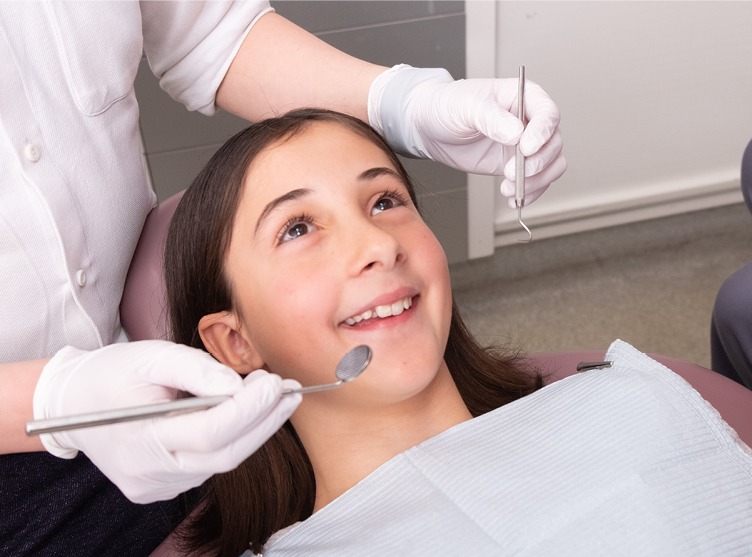The 6-Second Trick For Legacy Orthodontics
The 6-Second Trick For Legacy Orthodontics
Blog Article
The Ultimate Guide To Legacy Orthodontics
Table of ContentsIndicators on Legacy Orthodontics You Need To KnowThe smart Trick of Legacy Orthodontics That Nobody is Talking AboutThe Only Guide for Legacy OrthodonticsLegacy Orthodontics Things To Know Before You Get ThisLegacy Orthodontics Things To Know Before You Buy
In addition, we use adjustable treatment schedules, flexible repayment choices and a fun, pleasurable experience.An orthodontist is a dental expert educated to diagnose, prevent, and deal with teeth and jaw abnormalities. Orthodontists work with individuals of all ages, from children to grownups.
Malocclusion, or misaligned teeth, can result in dental concerns, including dental cavity, gum disease, and tough or unpleasant chewing. Not every person is birthed with straight teeth. If you have a poor bite or large rooms between your teeth, you might wish to consult a dental practitioner focusing on orthodontic treatment.
How Legacy Orthodontics can Save You Time, Stress, and Money.
( Picture Debt: DigitalVision/Getty Images) Orthodontists utilize dealt with and removable dental devices, like dental braces, retainers, and bands, to transform the setting of teeth in your mouth. Orthodontic treatment is for oral irregularities, consisting of: Uneven teethBite troubles, like an overbite or an underbiteCrowded teeth or teeth that are also much apartJaw misalignmentThe goal of orthodontic therapy is to boost your bite.
While you may think of orthodontists as generally for children or young adults who need braces, they can correct oral problems at any kind of age. Orthodontists go to college, oral school, and orthodontic institution.
All orthodontists are dentists, but not all dental practitioners are orthodontists. Orthodontic residency programs supply extensive, focused instruction for dental professionals. They focus on 2 locations: Just how to appropriately and securely relocate teeth Just how to appropriately lead growth in the teeth, jaw, and faceOnce an orthodontist has actually finished training, they have the choice to become board certified.
The 9-Minute Rule for Legacy Orthodontics
Misalignment, or malocclusion, is one of the most typical reason people see an orthodontist. It is genetic and is the result of dimension differences in between the top and lower jaw or in between the jaw and teeth. Malocclusion causes tooth congestion, a twisted jaw, or irregular bite patterns. Malocclusion is typically treated with: Your orthodontist attaches steel, ceramic, or plastic square bonds to your teeth.
If you have just minor malocclusion, you may be able to make use of clear braces, called aligners, rather than typical braces (https://sitereport.netcraft.com/?url=https://www.legacyortho.com). Some people need a headgear to assist relocate teeth right into line with pressure from outside the this hyperlink mouth. After braces or aligners, you'll require to put on a retainer. A retainer is a custom-made tool that maintains your teeth in area.
They're most typically made use of on youngsters. They can create additional space in the mouth without having to pull teeth. If you have a major underbite or overbite, you may need orthognathic surgery (likewise called orthodontic surgical treatment) to extend or reduce your jaw. Orthodontists make use of cords, medical screws, or plates to sustain your jaw bone.
You might require to see an orthodontist if you have: Crowding or not adequate room for all of your teethOverbite, when your upper teeth come over your bottom teethUnderbite, when your bottom teeth are too much forwardSpacing or concerns with gapsCrossbite, which is when your top teeth fit behind your bottom teeth when your mouth is closedOpen bite or a vertical gap in between your front base and upper teethMisplaced midline, when the center of your bottom and upper teeth don't align Dealing with a dental malocclusion can: Make biting, eating, and speaking easierImprove the symmetry of our face and your total appearanceEase discomfort from temporomandibular joint conditionsDifferent your teeth and make them much easier to clean up, helping stop tooth degeneration or tooth cavities It's typically a dental professional that initially notices misaligned teeth throughout a regular exam.
10 Easy Facts About Legacy Orthodontics Explained

Throughout your very first orthodontic assessment, you'll likely have: An oral examPhotos taken of your face and smileDental X-raysPanoramic (360 degree) X-rays of your face and headImpressions to create mold and mildews of your teethThese examinations will certainly assist your orthodontist know exactly how to wage your therapy. clear braces. An orthodontist is a dental professional that's had training to treat your teeth and jaw
Orthodontists may execute surgical procedure, exams,X-rays,and even more to aid you acquire a much more comfortable, much healthier smile. An orthodontist is concentrated on your bite, so something like a damaged tooth would be taken care of by a dental expert. Orthodontists are dental experts but not all dental experts are orthodontists. Orthodontists are concentrated on your bite, or the means your teeth meshed, and the straightness of your teeth.
Ever wondered just how celebs always appear to have perfectly straightened teeth? Orthodontists are dental specialists that concentrate on dealing with abnormalities in the teeth and jaws.
The smart Trick of Legacy Orthodontics That Nobody is Discussing

While braces are the most frequently recognized orthodontic treatment, orthodontists have a varied toolkit at their disposal. The specific technique selected depends on the seriousness of the instance, the patient's age, and individual preferences. These reliable braces make use of a system of braces bonded to the teeth and attached by cords.
Clear aligners, like Invisalign, are a preferred option for people looking for a much more discreet treatment choice. These removable trays are personalized to progressively change the teeth's placement. Headwear may be made use of in combination with dental braces or aligners to apply added targeted pressures, particularly for fixing jaw disparities. In instances of narrow jaws, palatal expanders can be used to develop area for correct tooth placement.
Report this page